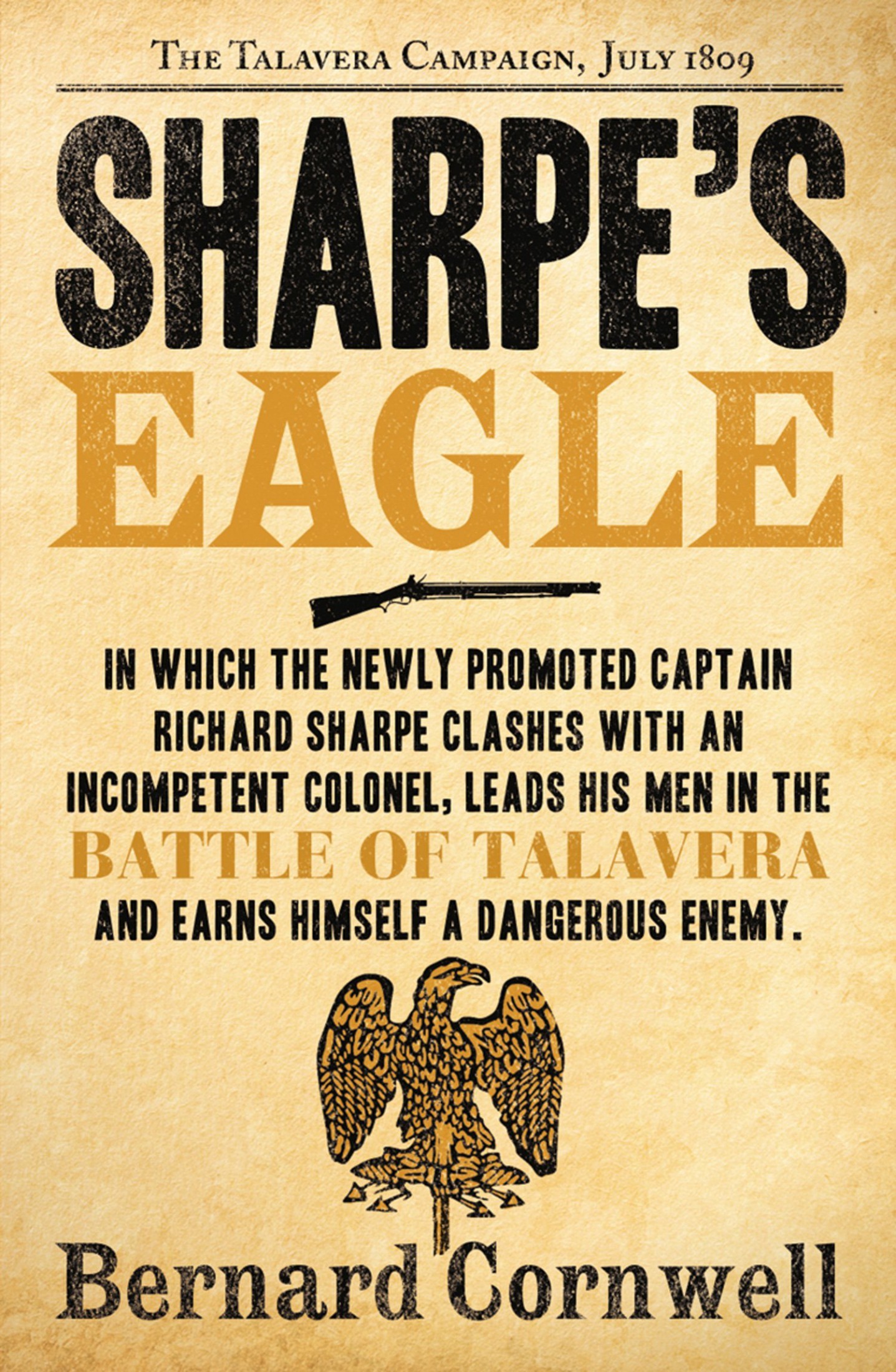Sharpe's Eagle (Sharpe, #8)
Title: Sharpe's Eagle (Sharpe, #8)

Author: Bernard Cornwell
Published in: 1981
Date read: 4th August 2017
Score: 4/5
Genre: Historical fiction
Plot: (Warning, may contain spoilers):
"Sharpe's Eagle" by Bernard Cornwell, published in 1981, is the first novel written in the iconic Richard Sharpe series, though chronologically it falls as the second book in Sharpe's Peninsular War adventures (after "Sharpe's Rifles"). It introduces readers to the character of Richard Sharpe as a Captain in the British Army during the Peninsular War in 1809, specifically during the lead-up to the Battle of Talavera.
The story begins with Sharpe, recently promoted from the ranks for saving the life of General Wellesley (later Wellington), being given command of a company of the South Essex Regiment. This is an immediate source of conflict for Sharpe: as an officer promoted from the ranks (a "gentleman by act of Parliament"), he faces intense prejudice and disdain from the other officers, most of whom are from aristocratic backgrounds and have purchased their commissions. They resent him and make his life miserable.
His new company, unfortunately, is also a motley crew – some good men, but many are disgruntled, undisciplined, and plagued by poor morale due to a string of incompetent aristocratic officers who have been killed. Sharpe quickly asserts his authority through a combination of harsh discipline and fierce loyalty to those who earn his respect.
The central conflict of the novel, beyond Sharpe's internal struggles with his new command and the snobbery of his fellow officers, revolves around the "Eagle" – the prized battle standard of a French Imperial regiment. Capturing an enemy's Eagle was considered the ultimate trophy and a supreme act of martial glory, often leading to promotions and immense prestige.
Sharpe's immediate superior, the incompetent and utterly corrupt Lieutenant Colonel Sir Henry Simmerson, is a constant thorn in his side. Simmerson is more interested in personal gain and appearances than in effective soldiering. When a tactical blunder by Simmerson leads to the catastrophic loss of the regiment's own King's Colours (its flag) in a skirmish, Sharpe is framed and court-martialled. He is saved from execution only by General Wellesley's direct intervention, on the condition that he redeems the regiment's honour by capturing a French Eagle.
The novel builds towards the brutal Battle of Talavera, a significant engagement between the British and French forces. Sharpe and his company find themselves in the thick of the fighting, facing overwhelming odds. Sharpe's personal quest for the Eagle becomes intertwined with the desperate fortunes of the battle.
The climax is a thrilling, gritty, and bloody depiction of the battle, where Sharpe's leadership, courage, and unorthodox tactics are put to the ultimate test. He leads his men in a daring assault to capture the French Eagle, not only to clear his name and secure his position but to strike a blow against the French and assert his hard-won place among the officers. "Sharpe's Eagle" sets the tone for the entire series, establishing Sharpe as a compelling, defiant hero navigating the brutal realities of war and the rigid class system of the British Army.
Comments:
I read all of the Sharpe books in chronological order, one after the other. When I have looked back, I have not separated them at all unless there is a specific thing to add which will be after saying that I suddenly loved historical fiction and anything that Bernard Cornwell writes.
Books that we've read by Bernard Cornwell (28):
Sharpe's Eagle (Sharpe, #8) (1981), Sharpe's Gold (Sharpe, #9) (1981), Sharpe's Company (Sharpe, #13) (1982), Sharpe's Sword (Sharpe, #14) (1983), Sharpe's Enemy (Sharpe, #15) (1984), Sharpe's Honour (Sharpe, #16) (1985), Sharpe's Regiment (Sharpe, #17) (1986), Redcoat (1987), Sharpe's Siege (Sharpe, #18) (1987), Sharpe's Rifles (Sharpe, #6) (1988), Sharpe's Revenge (Sharpe, #19) (1989), Sharpe's Waterloo (Sharpe, #20) (1990), Sharpe's Devil (Sharpe, #22) (1992), Sharpe's Battle (Sharpe, #12) (1995), Sharpe's Tiger (Sharpe, #1) (1997), Sharpe's Triumph (Sharpe, #2) (1998), Sharpe's Fortress (Sharpe, #3) (1999), Sharpe's Prey (Sharpe, #5) (2000), Sharpe's Trafalgar (Sharpe, #4) (2000), Gallows Thief (2001), Heretic (The Grail Quest, #3) (2003), Sharpe's Havoc (Sharpe, #7) (2003), The Last Kingdom (The Saxon Stories, #1) (2004), Sharpe's Escape (Sharpe, #10) (2004), Sharpe's Fury (Sharpe, #11) (2005), The Pale Horseman (The Saxon Stories, #2) (2006), Sword Song (The Saxon Stories, #4) (2007), Lords of the North (The Saxon Stories, #3) (2007)
This page was updated on: 3rd August 2025

